Automobiles are becoming a popular means of transportation in Vietnam, but when it comes to “luxury” cars, people often think of high-end or supercars with prices ranging from a few billion to tens of billions of dong. In the budget segment under 1 billion dong, there is almost no name other than the Suzuki Jimny, which is about to be launched.
This small, off-road vehicle currently has no competitors in Vietnam, but for the same price range, users will have many more practical options. According to shares from the dealership, the Suzuki Jimny is expected to have a price of up to 900 million dong, a considerable amount, on par with the high prices of some C-segment SUVs such as the Mazda CX-5 (749 to 999 million dong) or Hyundai Tucson (769 to 899 million dong), or Ford Territory (822 to 954 million dong). And that’s not to mention, all of these models are currently being heavily discounted.
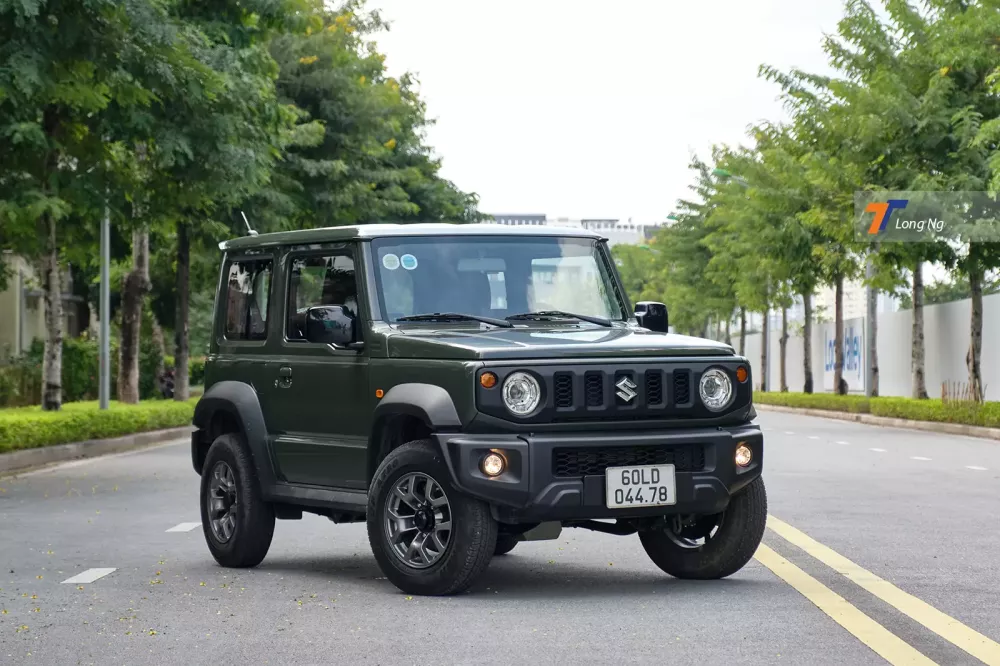
The Suzuki Jimny is expected to be launched in Vietnam at the end of this year, and it is likely to be imported completely built from Japan.
But of course, no one who buys a “toy car” is too concerned about the price. The expected price is high, but it is still cheaper than some markets in the region, for example in Thailand, the Jimny has the highest price of up to 1,790,000 baht, equivalent to about 1.22 billion dong. The Japanese car manufacturer does not intend Jimny to be a mainstream product. In fact, this model is only sold in limited quantities in the markets, and Vietnam is no exception.
So what makes the Suzuki Jimny special? Let’s find out in this article.
A “small G-Class” exterior with an economical version
The exterior design of the Suzuki Jimny is true to the off-road nature with square and boxy lines, overall resembling the Mercedes-AMG G-Class off-road SUV. This is also the main reason why the Japanese model attracts the attention of many consumers.
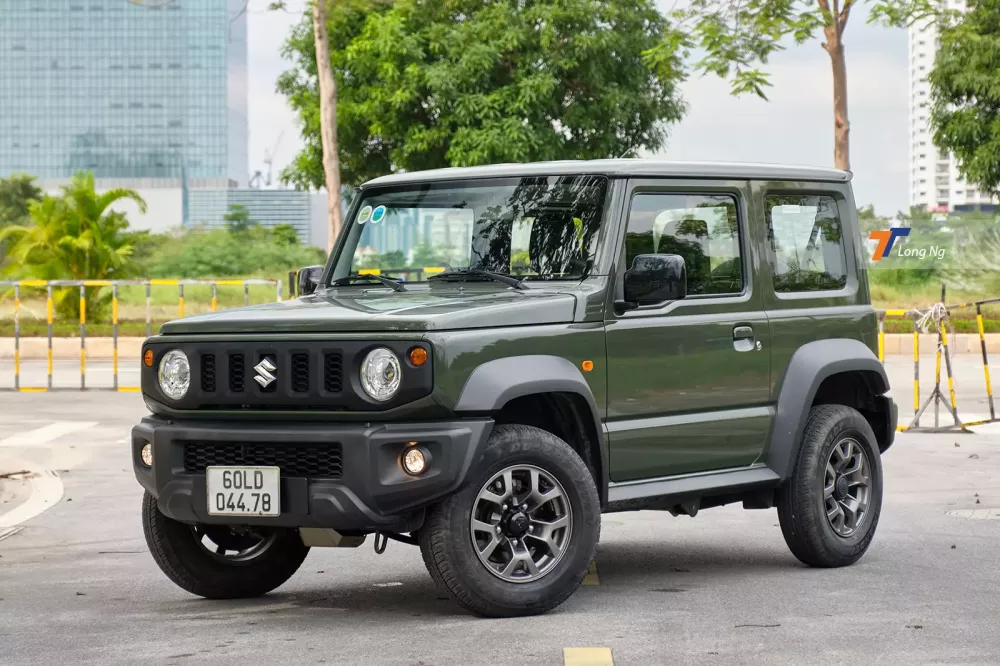
The front of the Suzuki Jimny is especially similar to the Mercedes-AMG G-Class with a Japanese letter-shaped grille surrounding the round lights.

The car is equipped with front/rear LED lights, headlights with automatic on/off function. The fog lights use Halogen bulbs.
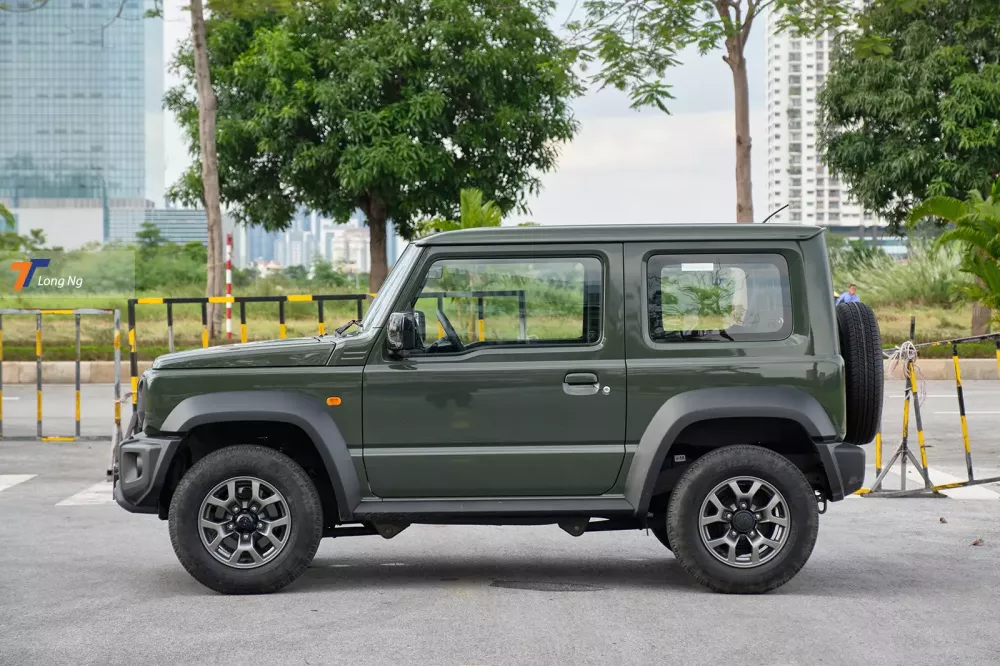
The upcoming Suzuki Jimny in Vietnam is of the 3-door version with a length, width, and height of 3,645 mm, 1,645 mm, and 1,720 mm, respectively.

The side view mirrors of the car have power folding/adjusting function, a relatively large size, and are easy to observe.

The car’s wheels are 15 inches in size, with a unique double spoke design, and come with Dunlop Grandtrek 195/80 tires. Near the front wheel well, turn signals are directly attached to the body of the car.
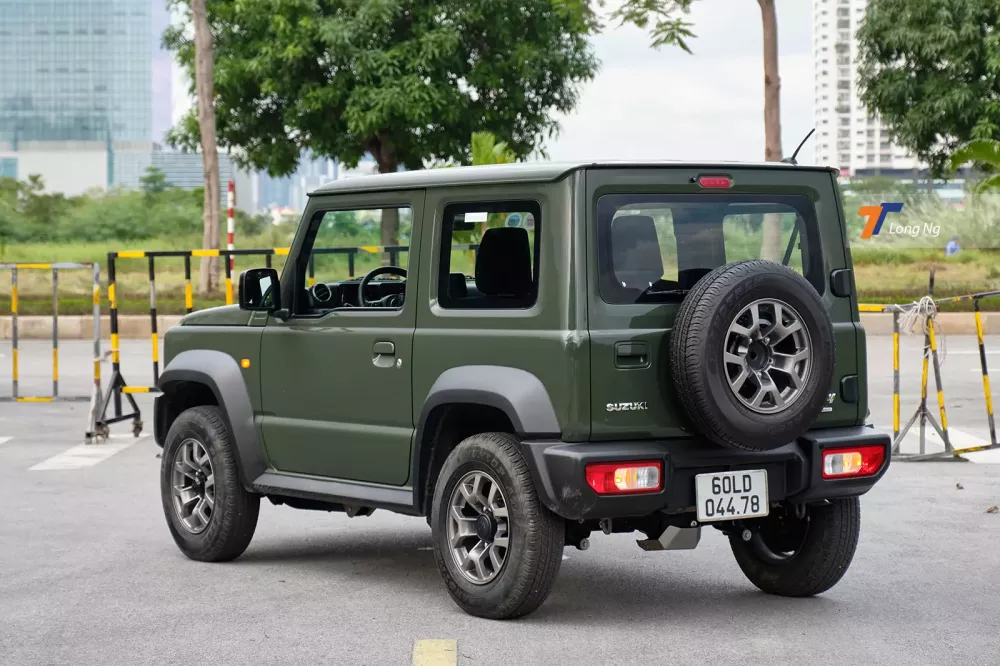
The spare tire is directly mounted on the rear door. The brake lights and turn signals are set quite low, making it difficult for vehicles behind to observe.
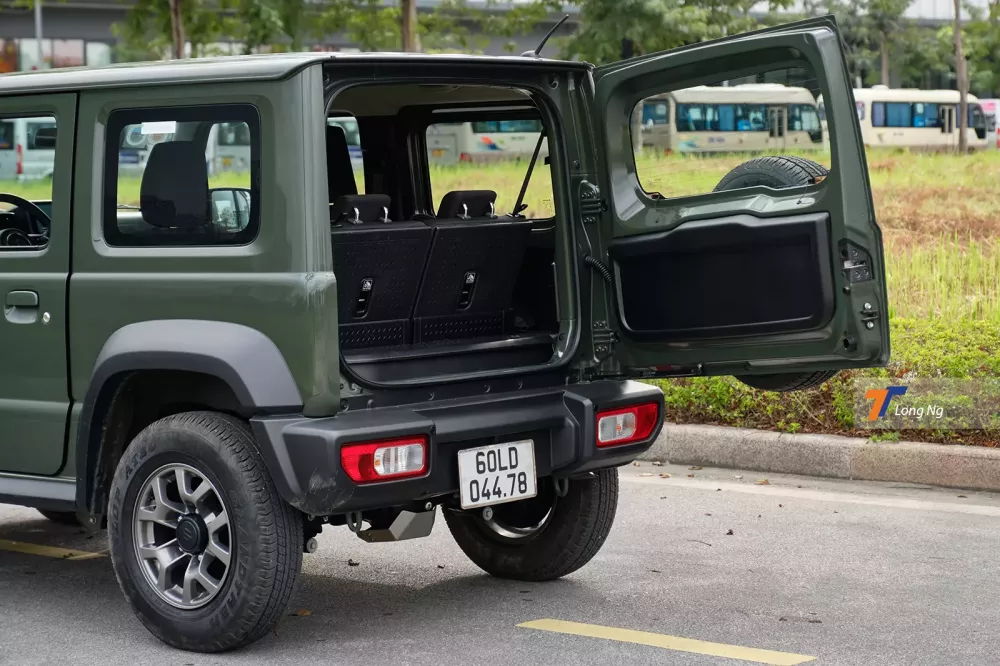
The rear hatch opens horizontally, similar to the Mercedes-AMG G-Class, and thanks to the power assist, it is relatively light.
Basic interior, not attractive enough
Stepping inside, the cabin of the Suzuki Jimny gives a familiar feeling. The overall interior is similar to the “siblings” Swift but has been refined to create a more rugged feel. The dashboard on the passenger side also has a large horizontal handle, helping passengers to stabilize themselves when traveling on complex terrain.
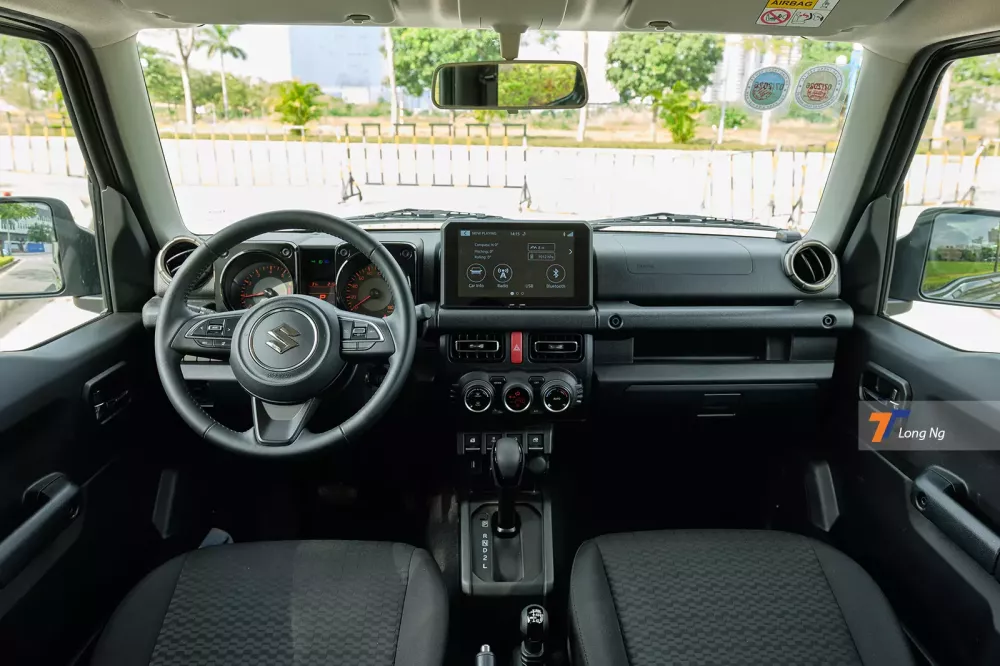
Although the expected price is up to 900 million dong, the interior of the Suzuki Jimny mainly uses plastic and fabric materials.
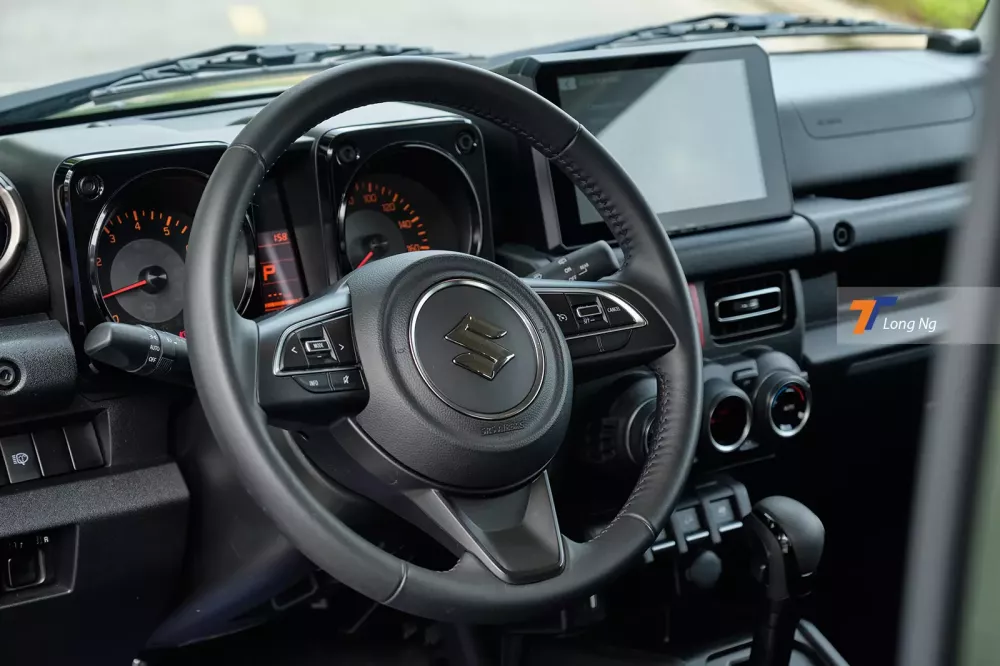
The car’s steering wheel has a 3-spoke design, integrated with some buttons to adjust volume, cruise control, and no hands-free conversation.

Behind the steering wheel is an analog instrument cluster combined with a small LCD screen, displaying some basic information.
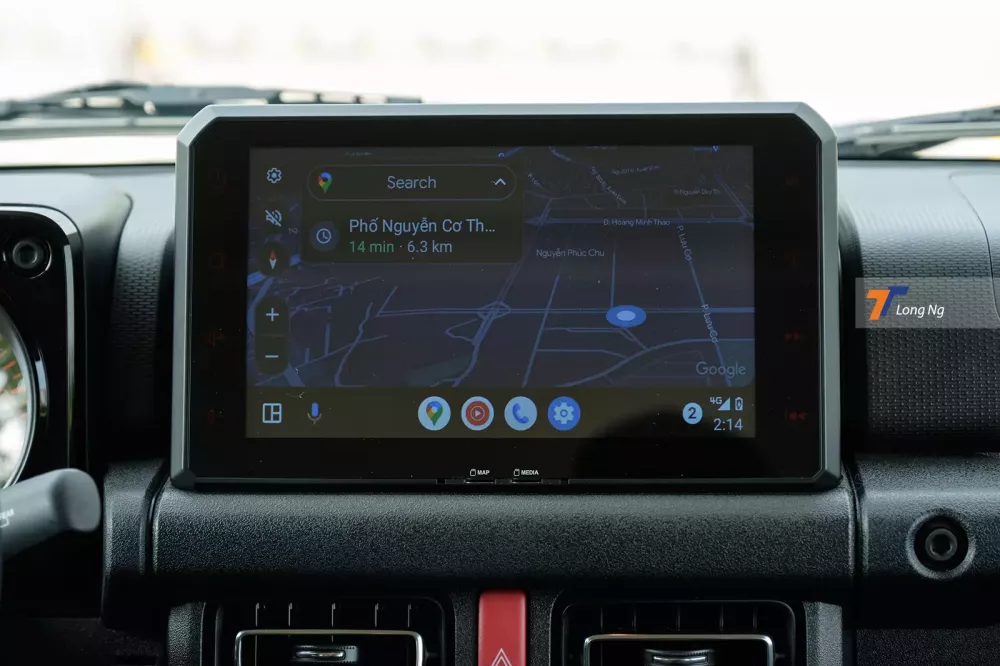
The car’s entertainment screen is a 10-inch type with Apple CarPlay/Android Auto connectivity.
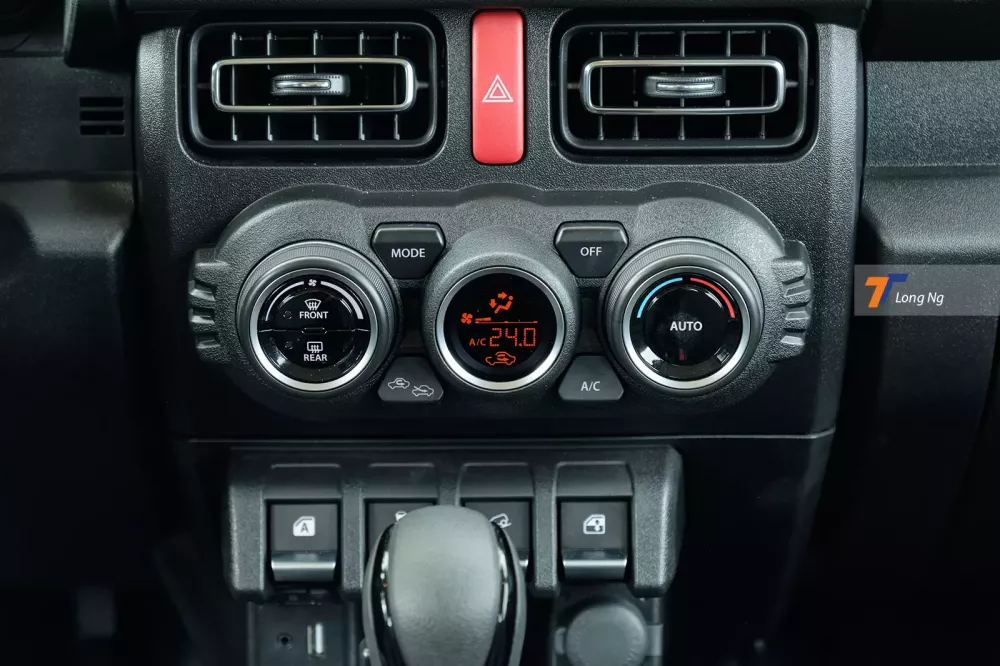
The car is equipped with a 1-zone automatic air conditioning system, without air vents for the rear seats.
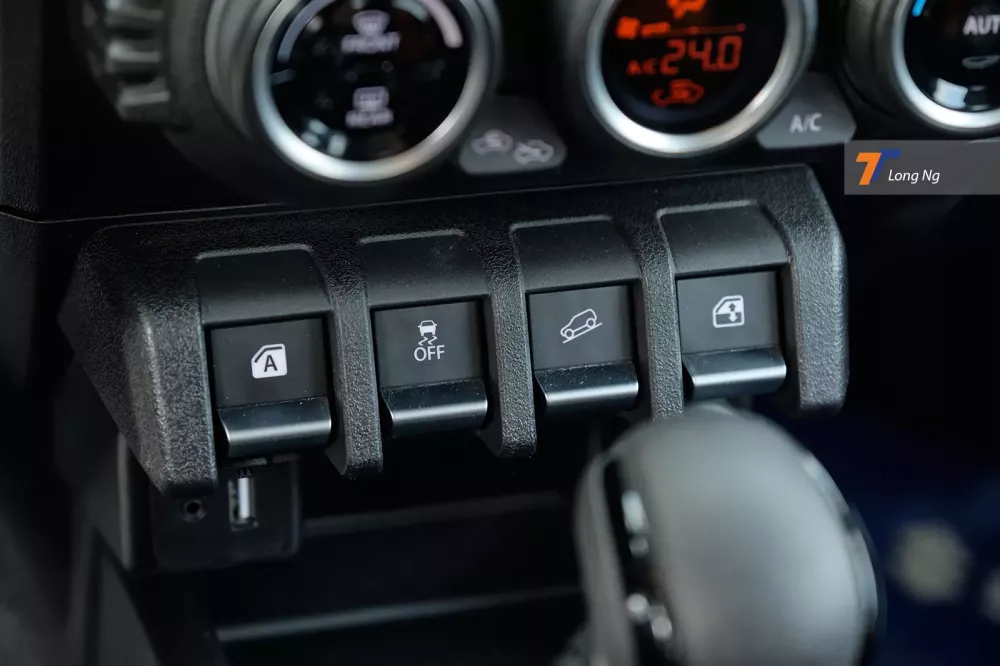
Below the air conditioning dial are physical buttons to turn on/off electronic stability control and activate hill-start assist. Note the two outer buttons are for raising/lowering the windows, a different design from traditional cars.
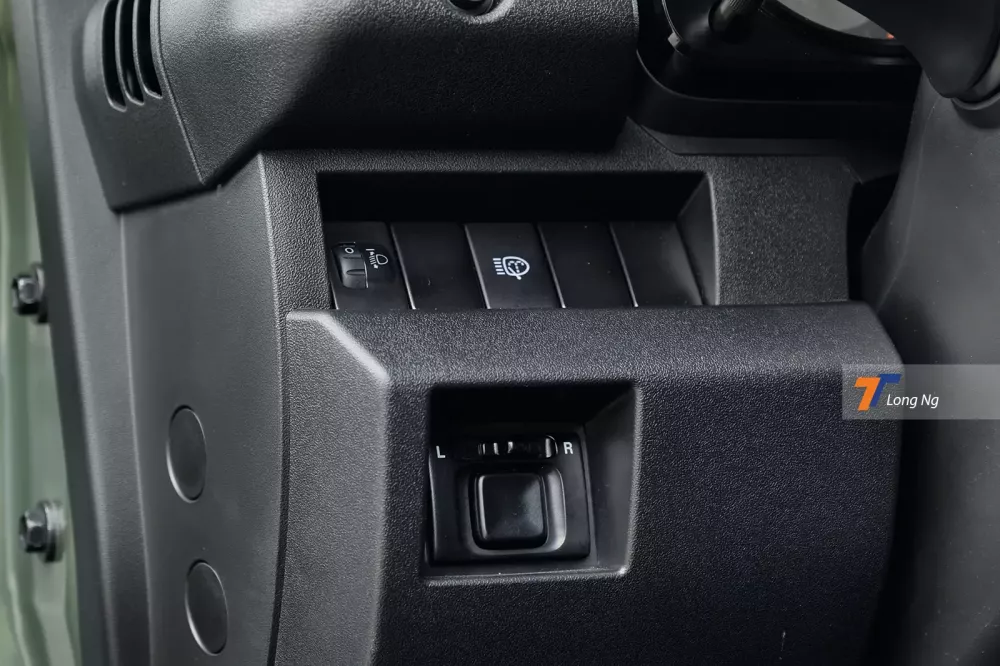
The button to adjust the side mirrors is placed in the left thigh area of the driver.

The gear lever of the car has a straight-pull design, which can easily cause gear slippage if not careful during operation.
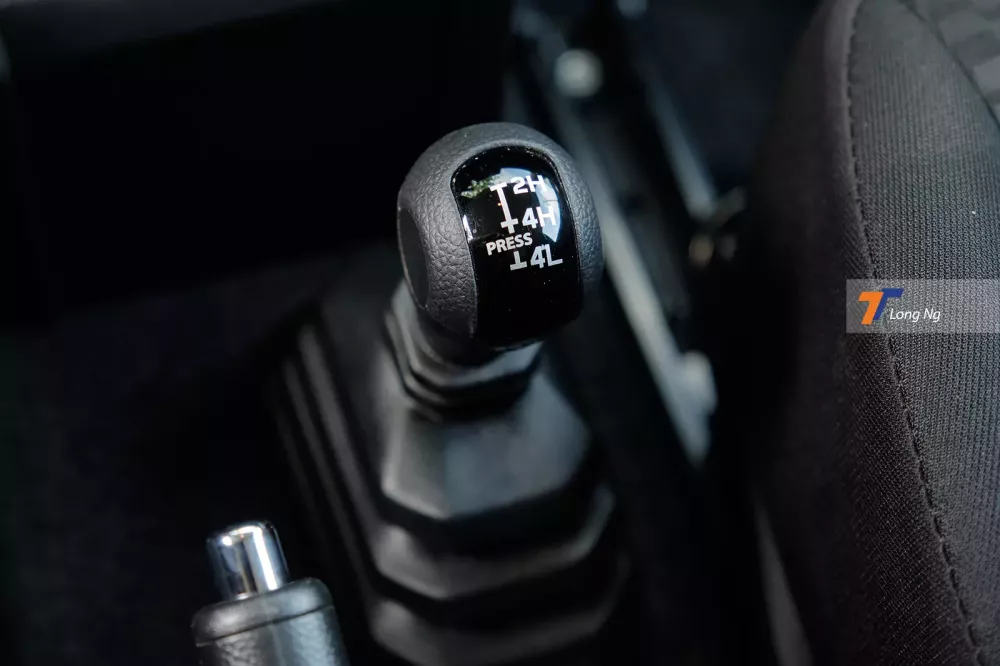
The differential lock lever with 3 modes: 2H (high gear ratio), 4H (high gear ratio), and 4L (low gear ratio).
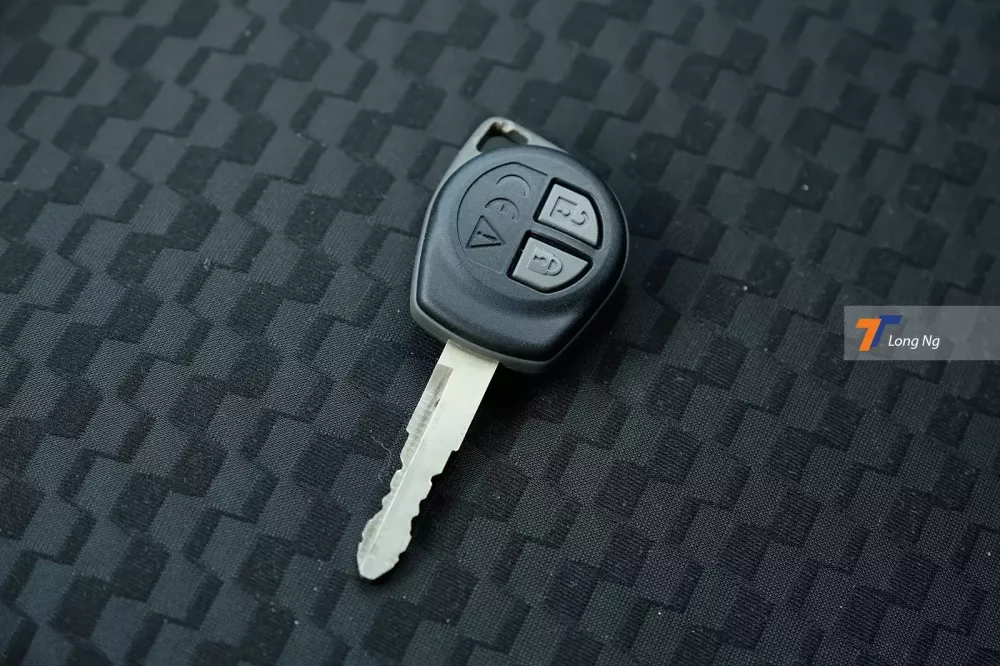
The Suzuki Jimny uses a mechanical key but still has remote door lock/unlock functions.
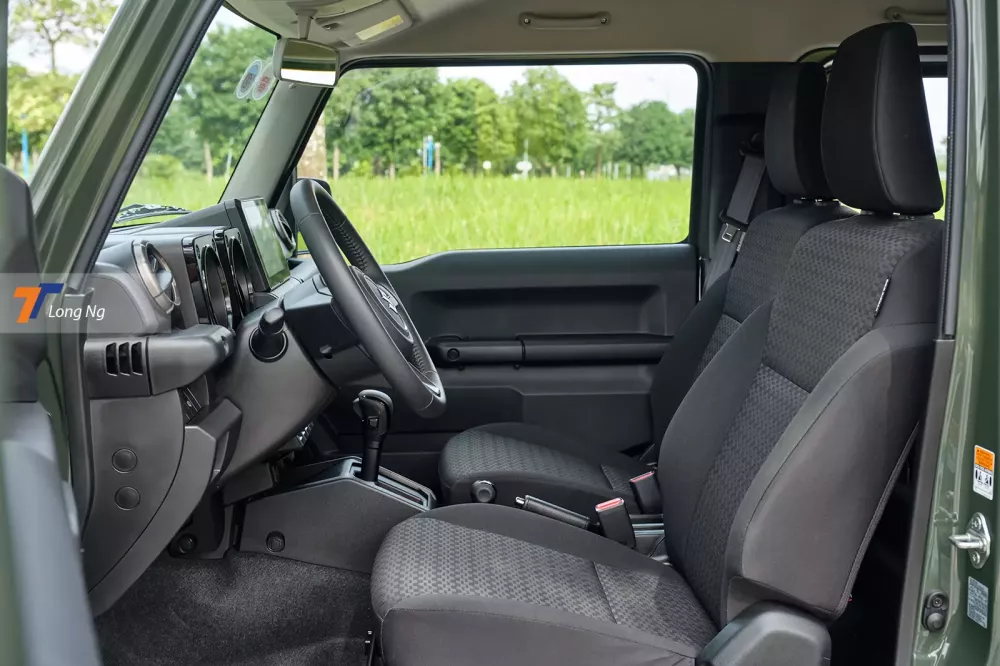
The seats of the car are covered with fabric, which can become hot in the summer. The front seats can only be manually adjusted and placed on sliding rails to create a passage to the second-row seats. Getting in and out of the second-row seats can be quite difficult if you’re not used to it.
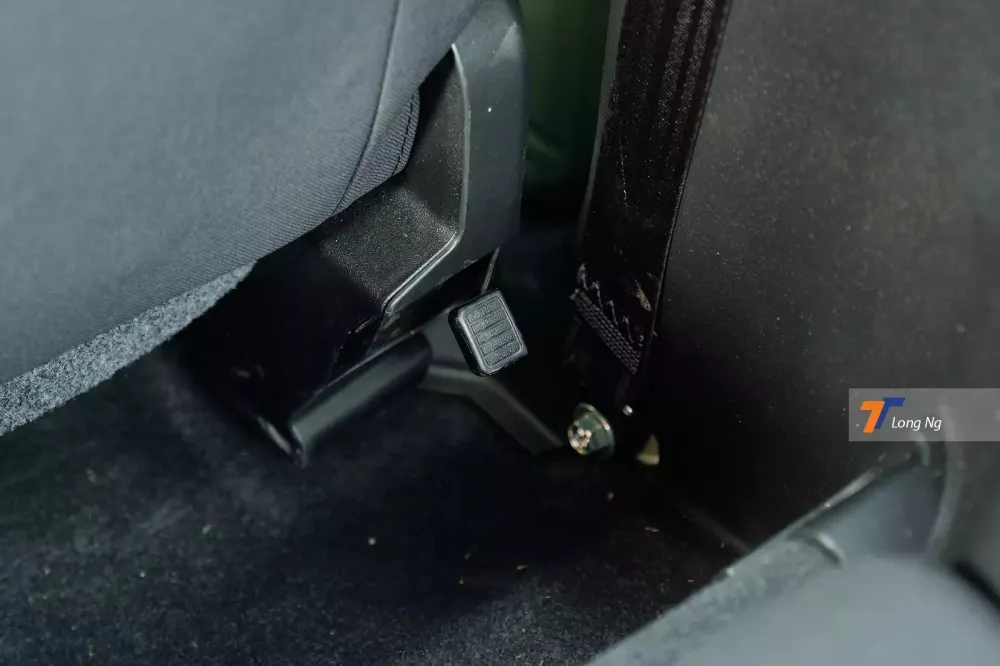
Behind the front passenger seat, there is a small lever that allows second-row seat passengers to easily exit the vehicle without the driver’s assistance. Simply press the lever, the front passenger seat will move forward and fold down for the person behind to easily exit the vehicle.
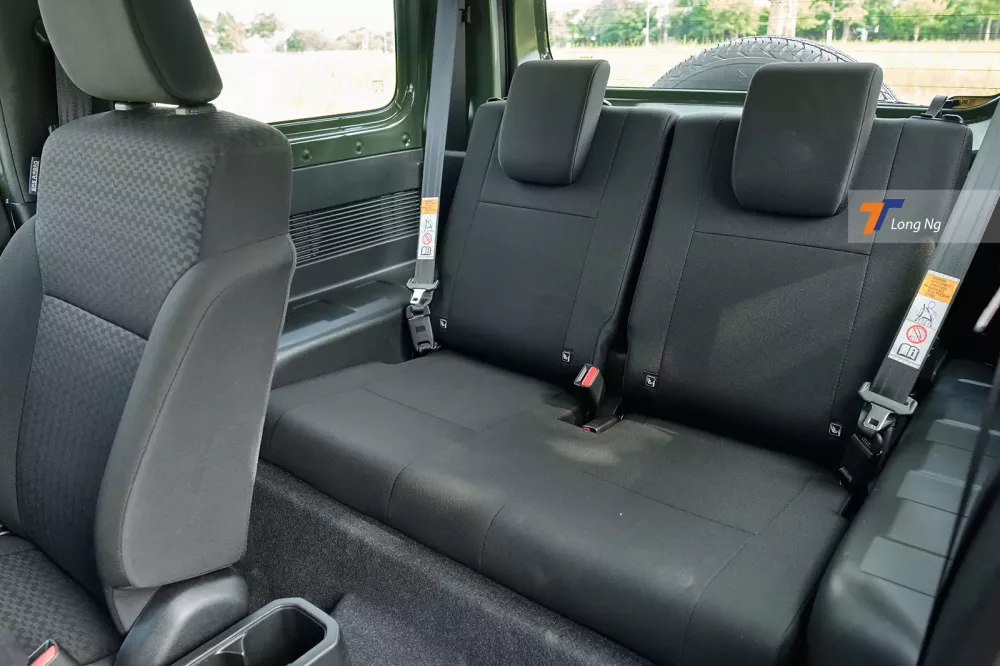
The second-row seats of the Jimny are quite spacious, providing seating for 2 adults, but they are close to the floor, which can cause discomfort when traveling long distances.
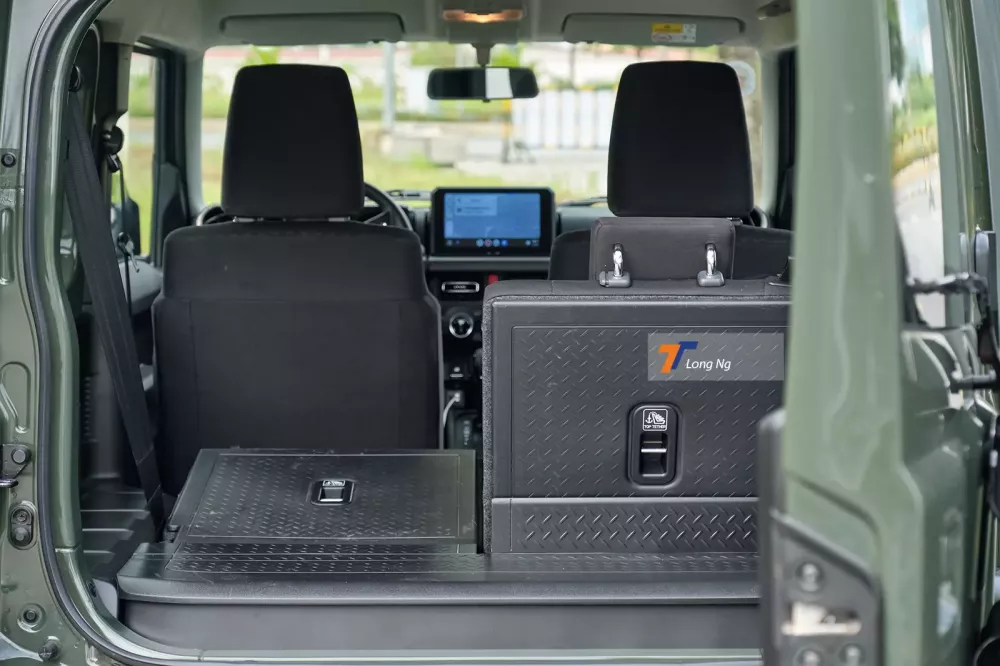
The luggage compartment of the Suzuki Jimny has a volume of only 85 liters, increasing to 388 liters when the second-row seats are folded flat.

On the left side of the second-row seat there is a 120W power outlet.
Light off-road oriented operation, not really suitable for urban driving
Under the hood, the Suzuki Jimny is equipped with a naturally aspirated, 1.5L gasoline engine with a maximum power of 103 horsepower and a maximum torque of 138 Nm. The car comes with a 4-speed automatic transmission and a 2WD system.
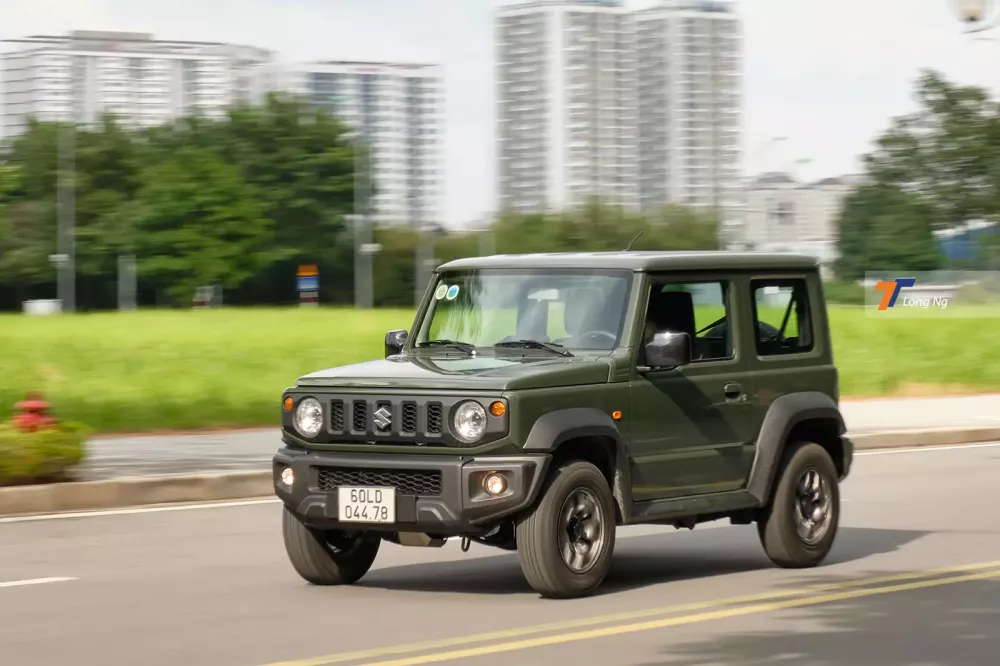
The Suzuki Jimny is equipped with a similar engine as the 7-seater MPV XL7 model.
In actual experience, the throttle response of the Suzuki Jimny is quite sensitive. However, the gearbox shifts slowly when the engine reaches high RPMs, leading to a slight delay when climbing slopes, and at the same time, engine noise enters the cabin quite loudly.
The Jimny’s steering wheel design with 4 turns helps the driver place the wheel more accurately when off-roading. However, this setup is not suitable for city driving as the driver will have to steer more than regular cars. Perhaps this is why the Japanese car manufacturer designed the steering wheel to be quite light.
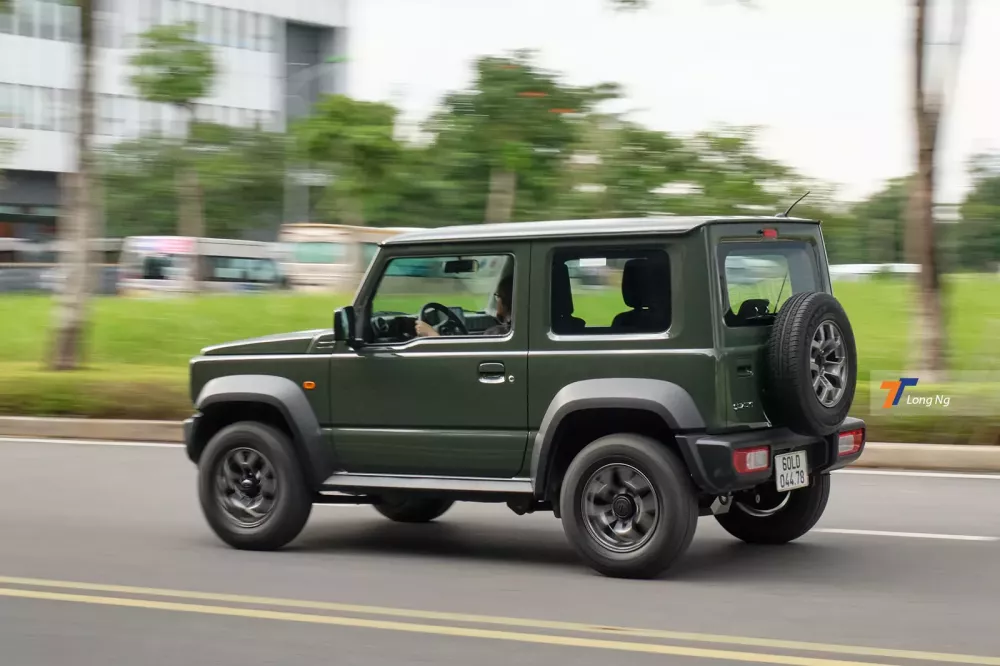
The tire size of the Suzuki Jimny is quite small, which can cause a slight tail wag when passing over speed bumps.
In general, if the aim is to use the Suzuki Jimny for daily commuting, users will need some time to get used to this steering. With a turning radius of only 4.8 meters and compact dimensions, this small off-road vehicle can still move flexibly in urban areas.
As for off-road capabilities, as there haven’t been any specific experiences, we won’t give a detailed evaluation. Based on the engine configuration, the Jimny is suitable for dirt roads and can handle bumpy terrain, but it will have difficulty conquering more challenging off-road trails like climbing mountains or crossing rivers.
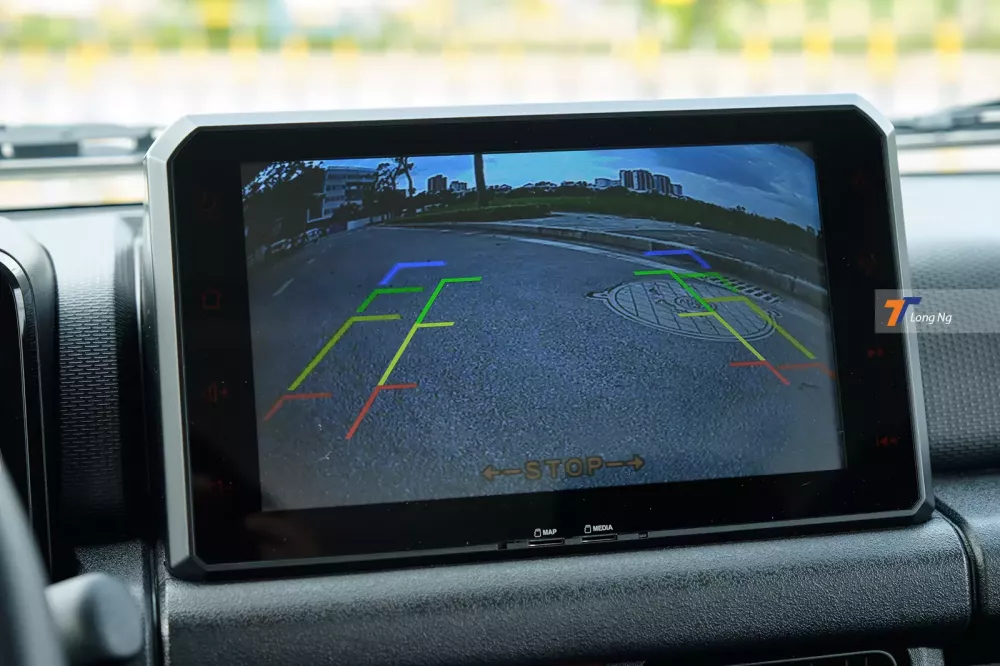
The car’s safety equipment is at a basic level, without active safety technology.
Who will be the customers of the Suzuki Jimny?
With the above factors, we can outline the portrait of Suzuki Jimny’s customers: they will be people with good financial situations, who already have a more common car for daily commuting, who want to have a vehicle to show their personality and style and “modify” it according to their preferences.









































